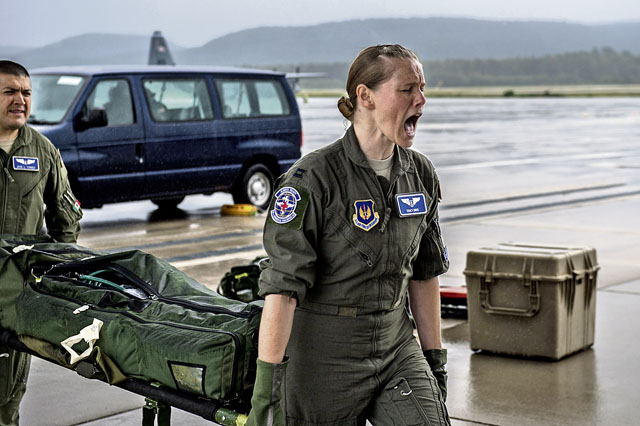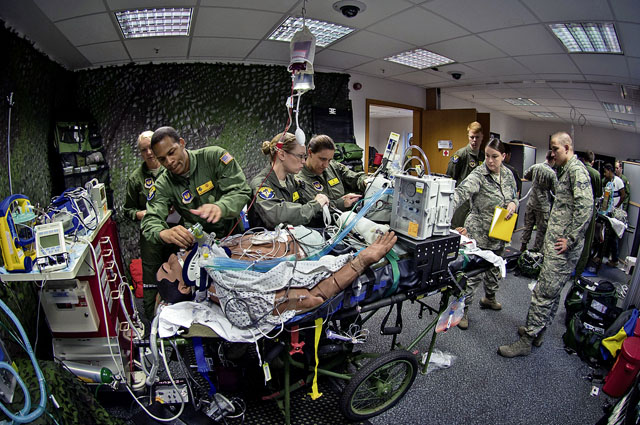
The 86th Medical Squadron’s Critical Care Air Transportation Team and the 86th Aeromedical Evacuation Squadron team conducted a training exercise on Ramstein’s flight- line July 12.

The training improved working relationships between medical entities while increasing the clinical and readiness skills of the Airmen performing in the exercise.
“When you get into a situation with a patient, you don’t know what to expect so you always have to expect the unexpected,” said Capt. Brandi Leahy, 86 MDS CCATT nurse. “Anything can go wrong, so you have to be prepared for that.”
During the simulation, CCATT and AE worked together to transport the patients who were in critical condition from the scene to the aircraft, and from the aircraft to Landstuhl Regional Medical Center.
“On the occasions that we do fly with CCATT, which isn’t that frequent, we need to make sure that we can still coordinate together,” said Staff Sgt. Yadira Wood, 86 AES technician.
Although both CCATT and AE deal with patients, their responsibilities differ. CCATT provides critical care to the patients in the air and in transit while AE has more extensive training with the aircraft and water survival. Both are important assets when dealing with scenarios like the one in the training exercise.
“The cohesiveness bet-ween CCATT and AE is critical,” said Leahy. “We need them and they need us in these situations. So being able to communicate with them and have good training exercises with them makes it better when you actually fly a real mission. You know what people’s strengths and weaknesses are and you know what to expect from them.”

Between inclement weather and working in tight spaces, the Airmen faced many challenges as they tended to their patients.
“Usually you don’t have this many people, but because we’re trying to maximize our capabilities we wanted to have as many people as we can out here,” said Wood.
From the challenges faced, the Airmen came out of the training with ideas to improve their effectiveness.
“I think we definitely need to maximize the aircraft space,” said Wood. “Ideally we would want to use the entire plane so the patients aren’t side by side.”
Overall, the training left the Airmen with more experience than they arrived with.
“Today we learned that you can never learn enough and you can never be prepared enough,” said Leahy. “These training simulations are important. If we don’t keep doing them, then things will slip and the deficits will get bigger and bigger.”


